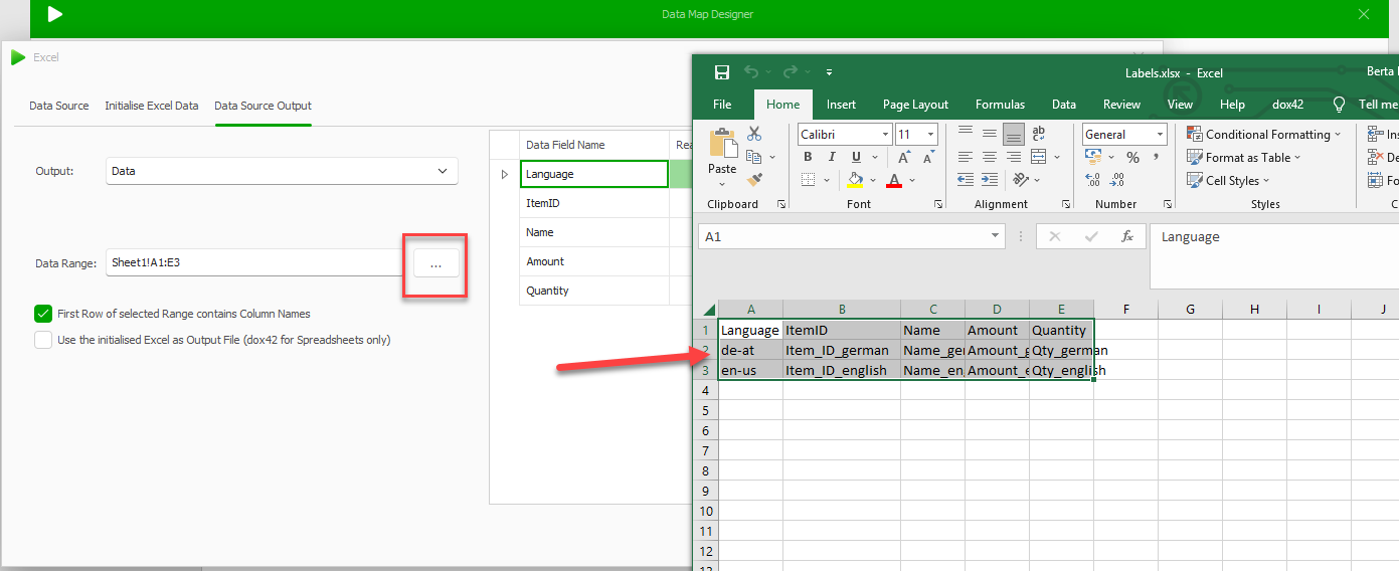Normally the headlines of the placeholders are written hard-coded into the report. This has the big advantage of the template being easy-to-read. However, if you need to support multiple language it has the disadvantage of needing a separate report for each language. The solution is to use labels instead of hard-coded text.
Steps
Create an Excel file with the required languages.

Excel file with two languages
The Excel language file is integrated to the Data Map the same way as the connection file
In Microsoft Word or Excel, go to the dox42 ribbon and select Data Map.

dox42 ribbon
The Data Map Designer window opens.
Select the Excel button.

Excel window
Insert a name for the Excel file.
Insert the path from the Excel file, always using the
<%DocPath%>.
Example:<%DocPath%>..\MyFile.xlsx
The..\tells the system to look a level above in the folder structure and there it will find an Excel file named MyFile.xlsx. Using<%DocPath%>makes it possible to copy the data map and insert it to another report folder without the need of changing the path.Select the Data Source Output tab.
Select First Row of selected Range contains Column Names checkbox.
Select the … button to select the fields from the Excel file.
The Excel file opens.Mark the area with all the data.

Data to be included from the Excel file
Filter the Excel language file as follows.

Select OK.
Change the hard-coded text label in the document template with the label placeholder.

Result
Your document template is using the Excel labels instead of hard-coded text.